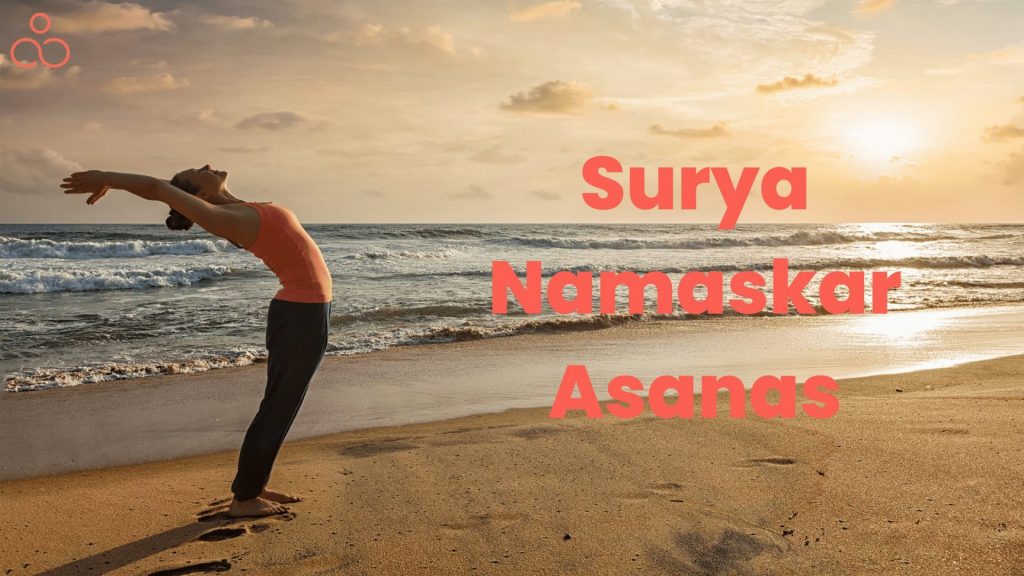In Sanskrit, a particular set of twelve yoga poses is referred to as the Sun Salutation and is known by the name of Surya Namaskar Asanas. One of the most well-known yoga techniques, it is a part of many different yoga systems, including Hatha, Vinyasa, and Ashtanga. The phrase is derived from two Sanskrit roots: surya, which means “sun,” and namaskar, which means “greetings” or “salutations”.
Surya Namaskar was traditionally performed as a way of showing homage to the sun. The sun is considered as the source of all life in Hindu culture, which is where the practice originated, and is hence highly significant.
12 names of Surya Namaskara Asanas (Hindi & English)
When done quickly, the Sun Salutation can provide an excellent cardiovascular workout. On the other hand, performing yoga postures slowly may be incredibly calming and introspective. Yet, saluting the sun is delightful in both cases. With consistent practice, your body will inevitably stretch and become more flexible.
Below are the Surya Namaskar asanas along with their procedures and benefits that you should do every morning.
Pranamasana or Prayer Pose: This is one of the first poses of the Surya Namaskar Asana. This is done as a sign of courtesy and respect for the sun. Here is how to do it:
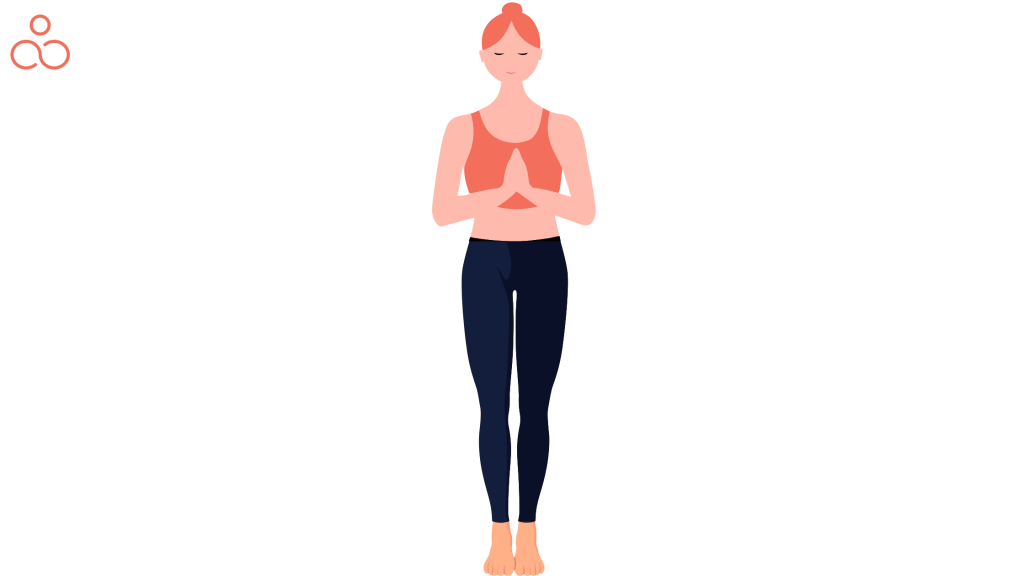
- With a tight grip on both feet, stand at the mat’s edge. Both feet should support the same amount of body weight.
- Keep your shoulders relaxed, your back upright, and your hands by your sides as you move.
- When you exhale, bring your palms together in front of your chest and lift your hands up from the sides. Put yourself in the standing prayer position.
Benefits: This position has a lot of advantages. It helps you maintain a better balance between your mind and body, improves your posture, opens the heart chakra, stretches your muscles, aids in digestion, and calms your mind and soul.
Hasta Uttanasana or Raised Arms Pose: The raised arms position comes next in the Surya namaskar yoga sequence.
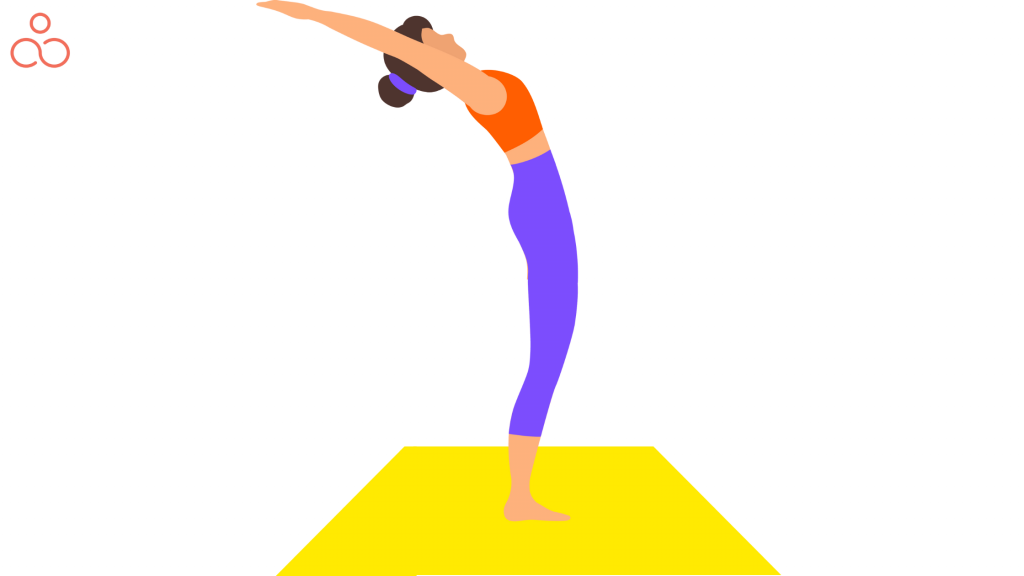
To perform this pose beginning with the first pose:
- Keep your back straight and posture upright.
- Now look up while bending slightly backward, keeping your arms raised in the air, and straightening your spine.
- The feet should remain firmly placed on the ground while the body is balanced.
Benefits: The upwardly extending pose known as Hasta Uttanasana lengthens the front of the body and helps strengthen the back muscles. It strengthens the hips, quads, and knees while stretching the shoulders, neck, chest, abdomen, and psoas.
Pada Hastasana or Standing Forward Bend Pose: The third posture is executed as shown below:
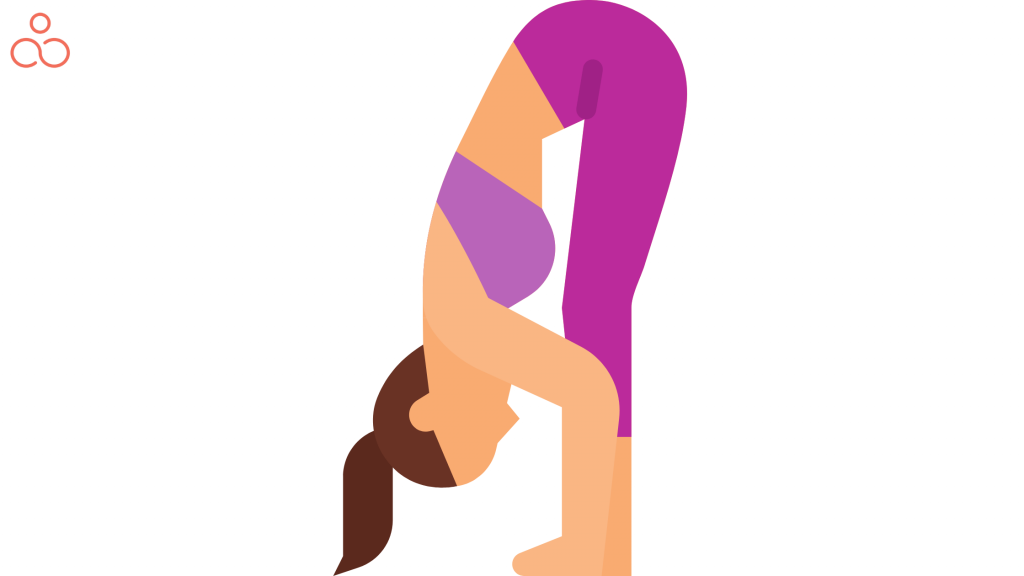
- Touch your toes with your fingers, bend forward while keeping your knees either straight or slightly bent.
- In order to uniformly distribute the bodyweight, press the heels firmly into the ground.
- Bend your knees while maintaining your back straight if you are unable to touch your toes with your fingertips.
Benefits: This pose is excellent for those with osteoporosis. It makes the thighs and knees stronger. Yoga for lower back pain that stretches the hamstring, hip, and calf muscles is beneficial. For people who have headaches, anxiety, or stress, it is a beneficial workout.
Ashwa Sanchalanasana or High Lunge Pose: From padahastasana, take the lunge position:
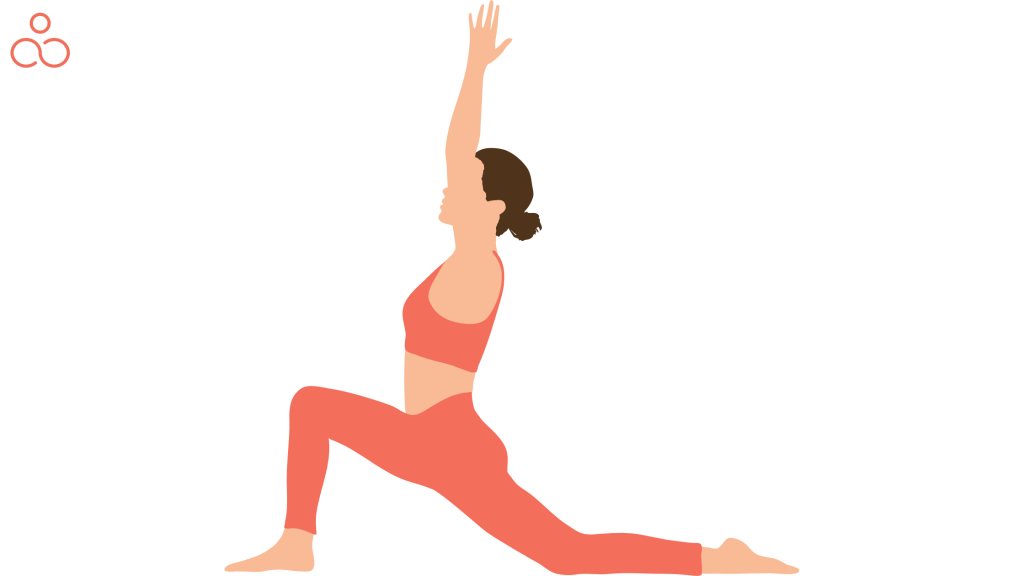
- Inhale while pushing the right leg back.
- Left knee should be 90 degrees bent and should touch the floor.
- The right knee ought to be in relation to the right chest.
- The neck should be bent back, hands on the floor.
- To ensure that the weight is distributed equally, the body should be balanced on its toes.
Benefits: It increases lung capacity and back strength. Furthermore, it is beneficial to the liver, kidney, and intestinal system. It stimulates the body’s internal organs in the abdominal region and aids in the development of awareness, poise, and control. It is beneficial for sciatica patients.
Dandasana, Plank Pose: Step into the plank position after the previous pose.
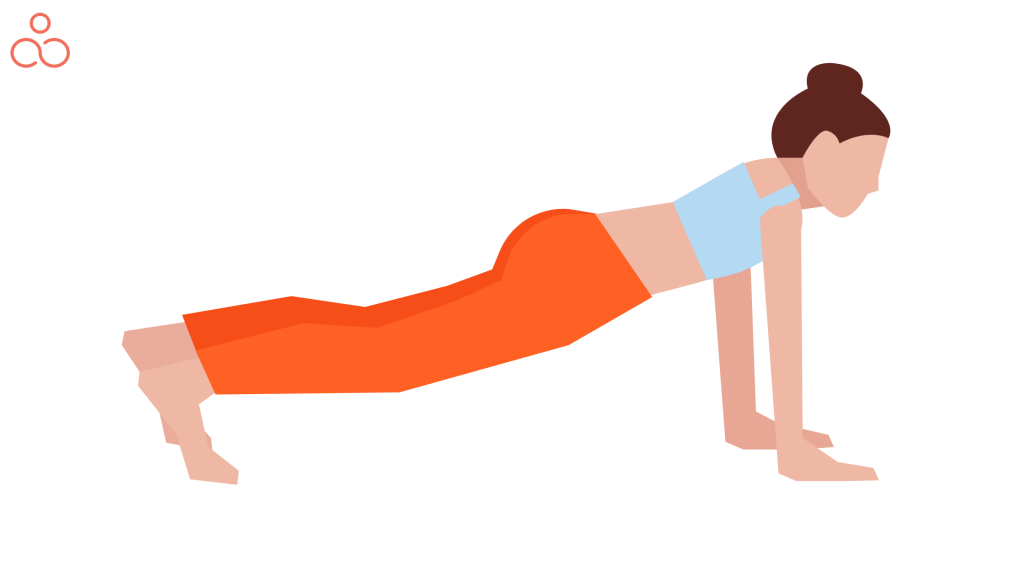
- Breathe deeply and extend your left leg back.
- Put both of your hands beneath the shoulders.
- Maintain a horizontal plane for your body.
Benefits: The body is prepared for the arm balance poses. It strengthens the wrist, arms, and legs. It stretches the hamstring while strengthening the muscles in the back and spine. If you have high blood sugar and wish to lower it, this position is helpful.
Astanga Namaskara or Eight Limbed Pose: It is an eight-part salutation.
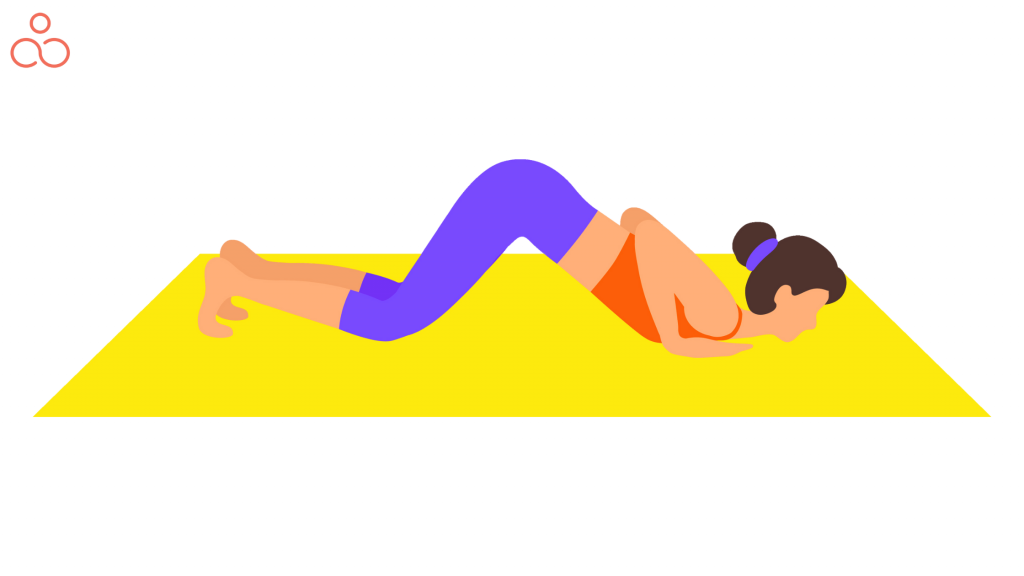
- Kneel down on the floor as you exhale.
- By maintaining your hips up in the air, place your chin on the ground.
- Hips must be in the air while the hands, knees, chest, and chin are all on the ground.
Benefits: It is an excellent posture and arm-balancing exercise. It strengthens the biceps and triceps and makes the arms and shoulders stronger. Moreover, it makes the chest, knees, and abdomen stronger. This posture reduces back pain and enhances the stability, flexibility, and mobility of the back and spine.
Bhujangasana or Cobra Pose: In this position:
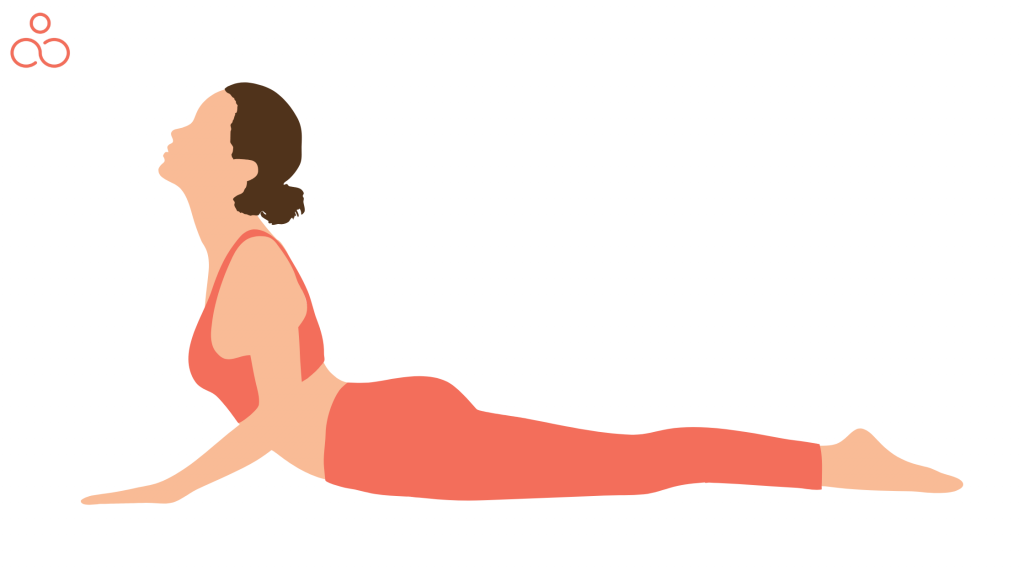
- Legs and the midsection are on the ground.
- Palms should be placed close to the chest.
- Inhale deeply and lift your upper torso with your hands.
- With the hood up, the head and trunk should resemble a snake.
Benefits: The cobra stance is the ideal yoga posture for anyone trying to lose weight. It results in a flat stomach by stretching the abdominal muscles. It might revitalise the heart. The mood might be improved. It strengthens the shoulders and arms and lessens lower back tightness.
Adho Mukha Svanasana or Downward Dog Pose: Switch positions from that to this by:
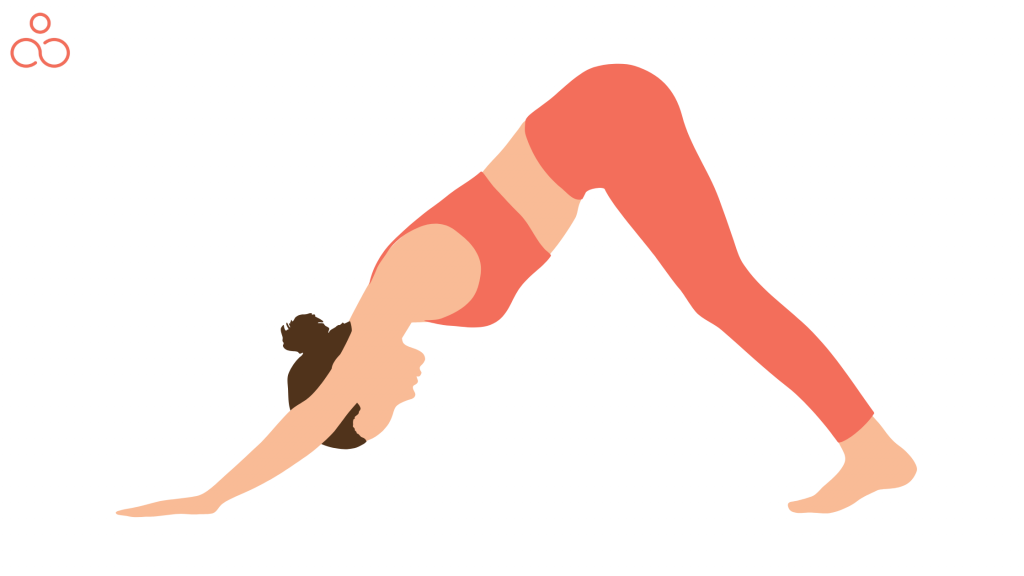
- Placing the palms on the floor and heels on the ground
- With the hips raised, form an inverted V with your body.
Benefits: It has various advantages, including relaxing the nerves, reducing tension, and increasing blood circulation. Also, it is beneficial for women going through menopause, back ache, or headaches.
Ashwa Sanchalanasana or High Lunge Pose: For this to be done:
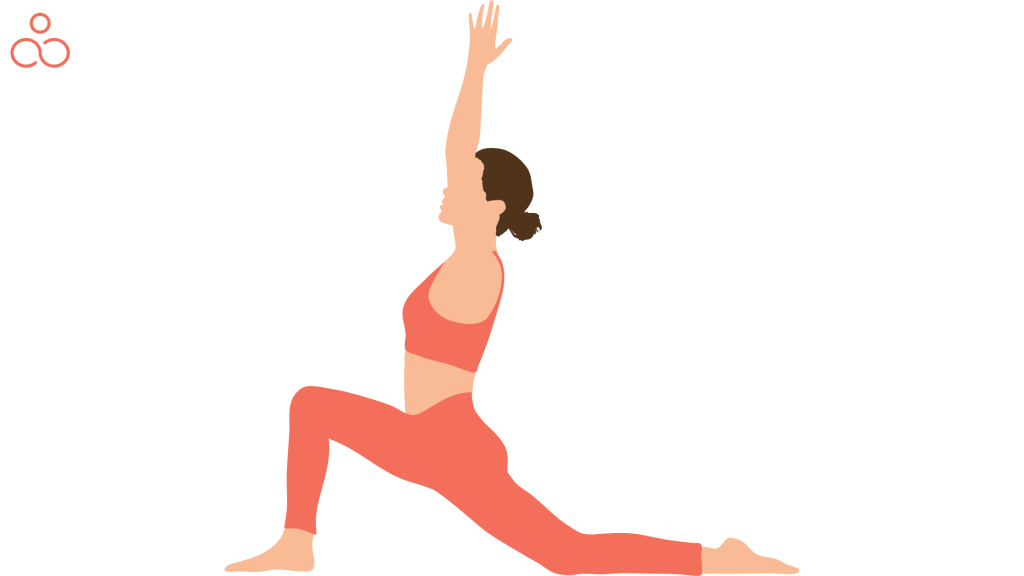
- Inhale deeply and step forward with your right foot. With the knee bent, the foot should be positioned between the hands.
- With the leg extended behind, lower the left knee to the ground.
- Look up while pushing your hips.
Pada Hastasana or Standing Forward Bend:
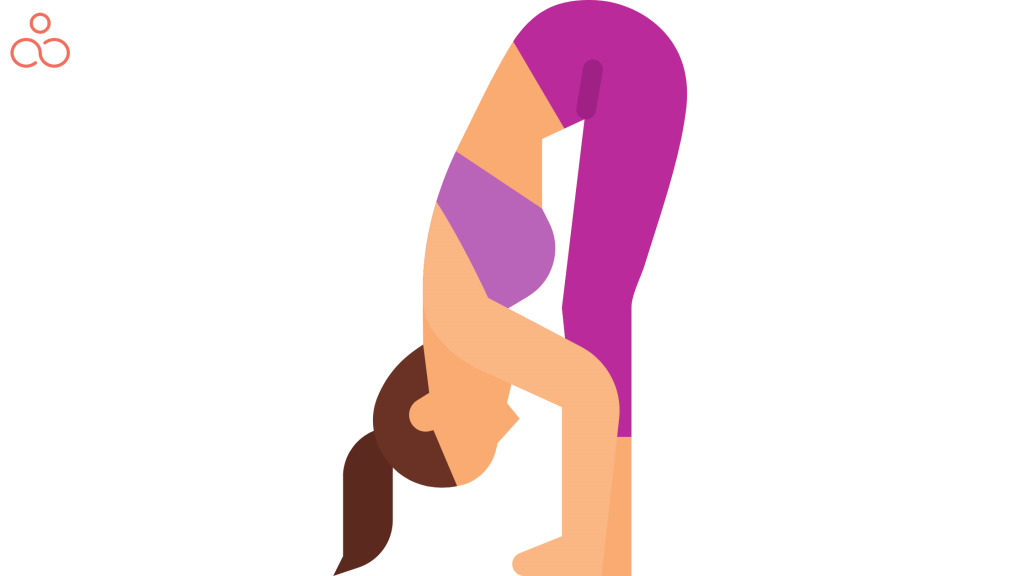
- Inhale deeply and bring your feet together.
- Hold the hand in the same place as before and slowly exhale.
- To get into this pose, exhale and bend your torso.
Uttana Hastasana or Raised Arms pose:

- Stretching the spine while raising the hands above the head is advised.
- Knees should be bowed and hands should be on the ground.
- The biceps should be adjacent to the ears as in the second asana as you gaze upward.
Pranamasana, Prayer Pose: The Surya Namaskar ritual ends with this phase.

- Exhale and take a comfortable stance.
- Lowering the arms while maintaining the palms in front of the chest. This brings the Surya namaskar to a close.
Spiritual and Mental Significance of the Surya Namaskar Asanas
Along with physical benefits, the Sun Salutation sequence also has numerous spiritual and mental importance.
- The Surya Namaskar, is best performed just before sunrise in the morning. As a result of this your body might be under your control, your mind may be at ease, your energies may also be balanced, and your consciousness might be at peace.
- Surya Namaskar is a potent mindfulness-enhancing exercise. With consistent practice, you may approach every work with great attention and consciousness.
- It enhances intellectual ability, attention span, focus, mental fortitude, and concentration.
- It creates a strong connection between the energy of Surya, the celestial Sun, and the energy of the sun within you.
- The Sun is a symbol for strength, vigour, force, energy, and life, and the connections we make and the expressions of gratitude we make help us cultivate and improve these traits inside ourselves.
Paces in Surya Namaskar: Slow, Intermediate and Fast
| Parameters | Slow paced Surya Namaskar | Intermediate paced Surya Namaskar | Fast paced Surya Namaskar |
| Meaning | If the breath and the mind are held in balance, the slow Surya Namaskar practice is thought to have a meditative effect. | The results of Surya Namaskar, when performed at a medium pace, are comparable to those of aerobic exercise with enhanced muscle endurance and power. | Surya Namaskar performed more quickly is regarded as a cardiovascular exercise and is a particularly effective warm up activity. |
| Number of sets | All of the poses last between one and 3 minutes at this Surya Namaskar pace. Repeating the slow Surya Namaskar 2 to 3 times removes stress and restores calmness and energy to the body and mind. | Each pose is held for two to five seconds at this tempo, then it is done 12 to 14 times. | The duration of each Surya Namaskar position is 1 second. We can perform 60 to 108 Surya Namaskar repetitions at this speed. |
| Effectiveness | Slow-paced Surya Namaskar is also helpful for building muscles and enhancing internal organ performance. Surya Namaskar, which is done slowly, also helps to reduce diastolic blood pressure. | It makes our body’s joints, muscles, spine, and lungs more flexible. It enhances blood circulation throughout the entire body. | It aids in the body’s fat burning process. |
| Eligibility | Beginners benefit significantly from a slow-paced practice because it allows them to focus on their breathing, physical alignment and technique, and breathing coordination for each step. | Beginners should begin with 2-4 rounds at a quicker pace and add an extra round every few days or weeks to avoid exhaustion. | A quicker pace would be advantageous for more seasoned practitioners since they are more accustomed to paying attention to their breathing, physical alignment, and technique, as well as breathing coordination for each step. |
The Mantras of Surya Namaskar
Surya Namaskar is a spiritual exercise because of the 12 Surya Namaskar Mantras, also known as Sun salutation chants. The 12 postures of the Surya Namaskar are performed in a meditational flow as the 12 Surya Namaskar Mantras are repeated. The Sun is worshipped while chanting in all of its phases and names. These 12 Surya Namaskar mantras are chanted in Sanskrit. One name of the Sun God appears in the middle of each mantra (between Om and Namah). The sun itself served as the basic energy carrier for each sound syllable in the name of the Sun God.
Following are the 12 Surya Namaskar Mantras:
- “Om Mitraye Namaha” (Pranamasana): The Sanskrit word “Mitraye” is derived from the root “Mitra,” which means “friend.” This mantra thus means “salutations to the friend of all” in its exact translation.
- “Om Ravaye Namah” (Hasta Uttanasana): Sun is being welcomed in this position by the word “Ravi,” which means “bright” in Hindi. The mantra is therefore interpreted as “salutations to the shining and dazzling one.”
- “Om Suraya Namaha” (Padahastasana): The word Surya, which is the term given to the Sun to be revered as a Hindu God who is in charge of regulating the day and life on Earth, has descended to become Suraya. Om Suraya Namaha, then, is Sanskrit for “salutes to he who causes activity.”
- “Om Bhanave Namaha“(Ashwa sanchalanasana): Once again, “Bhanave” is derived from “Bhanu,” the Hindi word for the Sun. It refers to the person who provides illumination. The mantra is translated as “salutes to he who illuminates” in this way.
- “Om Khagaye Namaha” (Dandasana): The word “Khag” in Hindi indicates the person who inhabits in the sky. So, given that the Sun’s location in the sky changes throughout the course of a day, it is discussed here. Salutations to him who goes swiftly in the sky is how the shloka is translated.
- “Om Pushne Namaha” (Ashtanga Namaskar): The word “Pushne” comes from the word “Poshan,” meaning “nourishment”. Chanting this Surya Namaskar Mantra honours the Sun for providing food to all living things. It is better regarded as a greeting to the source of vigour and sustenance.
- “Om Hiranya Garbhaya Namaha” (Bhujangasana): “Hirangarbh” is a compound word that was created by fusing the words “Hiran” (deer) and “Garbha” (womb). The beginning of life in the universe is also thought to have begun in the womb of a deer. Since the Sun is a golden cosmic body, it is sometimes referred to as the “golden egg.” This mantra salutes the golden cosmic self.
- “Om Marichaye Namaha” (Adho Mukha Svanasana): Another word for sun that signifies “rays of light” is “marich”. Since the Light ushers in morning. The translation of this mantra expresses greetings to the Lord of the Dawn.
- “Om Adityaye Namaha” (Ashwa Sanchalanasana): The universal mother Aditi is the mother of Aditya. We honour Sun as the cosmic mother’s son in this Surya namaskar mantra. It meant “Greetings to Son of Aditi, the Cosmic Mother” in its direct translation.
- “Om Savitre Namah” (Padahastasna): Sunrise and sunset are two of the Sun’s daily displays of its two states. It is referred to as “Savitr” in Hindi or Sanskrit before sunrise. As a result, “Om Savitre Namah” is a salutation to the creator or enlightener of the world.
- “Om Arkaya Namah” (Hasta uttansana): The word “Arkaya” used here is derived from the word “Ark,” which refers to a worshippable object. Salutations to He Who Is Fit to Be Praised is how it is translated as a result.
- “Om Bhaskaraya Namah” (Pranamasana): “Bhaskar” is a compound phrase including “Bha” that denotes “light and wisdom” while “Kar” refers to “do”. It represents the Sun as the source of illumination and enlightenment for practitioners. It is interpreted as greetings to the one who leads to enlightenment.
Limitations of Surya Namaskar
Since the practice of Surya Namaskar asanas requires an adequate amount of energy and continuous breathing, there are certain limitations which should be known by people before practicing it. Following are the limitations:
- Physical Weakness: Since it is a yoga sequence which requires proper involvement, one with weak bones and muscles should be very careful before performing it.
- Back Pain: There is continuous pressure on the lower back and hip while practicing the Sun Salutation, so a person with back injury or spinal injury or back pain should refrain themselves from practicing it.
- Pregnancy: A pregnant woman is not advised to practice this sequence as there is continuous pressure on the back of the lower abdomen.
- Higher Blood Pressure: People with high blood pressure are not advisable to practice it but with proper guidance one can do it slowly.
- Arthritis: The major role is played by knee strength during this sequence. Anyone having stiff knees and or severe arthritis should refrain themselves from practicing it.
- Wrist pain: Someone having any kind of wrist injury or pain should avoid this sequence as there are certain poses which puts pressure on the wrist and thus will make the injuries more severe.
FAQs
Can Surya Namaskar be only considered as one exercise?
No, the entire sequence of the Surya Namaskar is a complete workout for a person’s body. It includes stretches and also improves the blood circulation in the body. It is one of those workouts which do not require any equipment and can be practiced by people of all ages.
Does Surya Namaskar require an adequate amount of flexibility?
When yoga is practiced regularly, it makes the body flexible. So, the only requirement while practicing the Surya Namaskar sequence is adequate strength and one should be free from any kind of physical illness.
Is it compulsory to chant all the mantras while practicing the Surya Namaskar sequence?
No, it is not compulsory to chant the mantras, while practicing the sequence. You can do six rounds of it on a daily basis for four weeks and will be able to see the difference in your body.
Can Surya Namaskar be done during periods?
Yes, it can be done while you are on your period. The only precautions to be taken care of is that, make sure you are not having excessive bleeding and cramps and do the sequence at a slower pace.
Is it compulsory to practice Surya Namaskar early in the morning?
Surya Namaskar is all about discipline and there are no restrictions as in when to practice it. So, you can practice it at any time of the day and it will have an equal benefit on your body irrespective of the time.
What will happen if Surya Namaskar is practiced every day?
Surya Namaskar is one of those yoga sequences which benefits every part of the body. It can increase the metabolism, it strengthens muscles and bones, it might also improve menstrual disorders in women and ensures proper blood circulation, so if it is practiced everyday it can be very effective.
Why do we do Surya Namaskar 108 times?
There is no specific reason for doing the Sun Salutation 108 times. The only thing is that our body gets a feeling of accomplishment after completing all the sets.
How long are the poses in Surya Namaskar to be held for?
Start by remaining in each position for as long as you feel comfortable. Try holding for a little bit longer each time you practise, and gradually increase your ability. Injury and energy loss might result from pushing oneself above your threshold limit.
How should a beginner perform a sun salutation?
You can always watch videos to learn all the postures in Surya Namaskar and how they are to be done. Whereas, it is strongly advised to practise the pose under the guidance of a certified yoga instructor if you have joint pain, back pain, or generalised body weakness.
Can Surya Namaskar be practiced during pregnancy?
Yes, Surya Namaskar is safe to perform when pregnant. It is the best kind of workout since it works every muscle in your body. It benefits not only your physical health but also your emotional health. Practicing Surya Namaskar can begin during the first trimester of pregnancy. But, before performing Surya Namaskar while pregnant, please speak with your doctor.
What is the difference between classical and modern versions of surya namaskar?
Classical: The 12 movements that make up the classical Surya Namaskar salute the 12 facets of the sun from dawn to dusk and are traditionally done facing the rising sun.
Modern: The next version will undoubtedly help you break the monotony even though it isn’t a surya namaskar technically. It has similar advantages. You will undoubtedly perspire profusely after the series of intense manoeuvres. Try the moon salutation if you’re tired of the sun salutation, especially if you exercise after sunset.
Conclusion
In the quest for a spectacular life, the majority of us have been dragged into demanding schedules and gruelling work hours, all of which may have a substantial negative impact on our health and happiness. It seems to be a challenging challenge to even set aside a short amount of time to better one’s health and mind. The Sun’s energy, which manifests as heat and light, sustains life on Earth. Surya Namaskar, often known as the sun salutation, can help you gain more steadiness in all areas of your life if you set aside some time for it. So, it is an urge to everyone to invest some of your time in practicing this sequence to enjoy its benefits.

